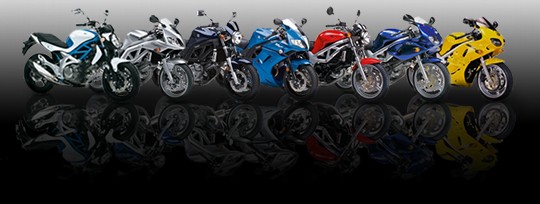 |
 |
| Bikes - Talk & Issues Newsworthy and topical general biking and bike related issues. No crapola! Need Help: Try Searching before posting |
 |
|
|
Thread Tools |
|
|
#11 | |
|
Guest
Posts: n/a
|
Quote:
Last edited by -Ralph-; 29-04-11 at 07:52 AM. |
|

|
|
|
#12 |
|
Member
Mega Poster
Join Date: Mar 2004
Location: Not in Yorkshire. (Thank God)
Posts: 4,116
|
Your reading the chart the wrong way round, the higher up the chart, the higher the tensile strength.
However, my concern about being brittle is not its tensile strength. but failure under use. regular shock loading due to the varying loads applied on the axle in use could lead to sudden brittle fracture. you wont know anything until the studs go ping and the wheel falls off. I am not trying to be a doom munger, but I spent 8 years as an R&D engineer in Leylands labs specialising in durability and component failure. I have seen lots of brittle failure caused by design as well as metallurgy.
__________________
Not Grumpy, opinionated. Last edited by timwilky; 29-04-11 at 07:59 AM. |
|
|

|
|
|
#13 |
|
Guest
Posts: n/a
|
I did two years of Engineering at University, before deciding 'bugger this' and switched to an IT degree. That was 15 years ago and I've forgotten just about all of it.
Is tensile strength the figure I need to be looking at for a shear, which is what we are worried about with this stud in this application. I understood tensile strength to be the ability to resist a pulling force, not a shearing force. Some things, such as a glass rod, have very good strength if pulled lengthways, but are still very brittle and snap easily with a sideways force. I'm not arguing with anybody (I wouldn't have the knowledge to do that), I just want to understand what I am doing, and why. 
|

|
|
|
#14 | |
|
Guest
Posts: n/a
|
Quote:
|
|

|
|
|
#15 |
|
Member
Mega Poster
Join Date: Mar 2004
Location: Not in Yorkshire. (Thank God)
Posts: 4,116
|
Not necessarily, Think firstly of a ductile material, once it has exceeded its yield point it will stretch, whereas a brittle one will simply snap.
You then have fatigue failure where constant bending etc will cause it to snap, sometimes with an element of brittle fracture as the fatigue opens up the crack that reduces the load carrying area as the crack grows leading to a combination of fatigue with the cataclysmic failure being brittle. or sudden brittle is more likely with a shear force, but any loading could do it. you cannot predict in a stud the grain direction etc, but the failure tends to be across the grain boundaries. Yes whilst I was a mechanical engineer 30 years ago, I too got into IT, so have probably forgotten more that I knew in the first place. I would trust as the final arbitrator either a professional metallurgist or a whippersnapper young pup of a mech eng like YC who hasn't had time to forget what our taxes have taught him.
__________________
Not Grumpy, opinionated. |
|
|

|
|
|
#16 |
|
Member
Join Date: Jul 2010
Location: Devon
Posts: 876
|
Stainless into alloy promotes electrolytic corrosion, and stainless in general is much more prone to galling. I'd personally use steel studs in this application, as Yamaha would have done originally. Be careful of generic exhaust studs which are quite likely to be a relatievly low grade steel.
|
|
|

|
|
|
#17 |
|
Guest
Posts: n/a
|
Short post ad doing it on phone.
Personally in that application I would like 1.5x thread diameter for thread engagement. The design looks like the spindle is held in a recess in the leg and the studs are holding it in place. Therefore there not as likely to see the full shear force if fitted correctlu. Now the thing for me (I've been caught out by this before ) is studs of unknown origin can be any old ****e. Get proper ones from a proper bolt supplier. |

|
|
|
#18 |
|
Guest
Posts: n/a
|
BBtw I use a2 and a4 every day for pressure retaining applications but don't have the experience of brittle fracture that Tim does.
|

|
|
|
#19 | |
|
Noisy Git
Mega Poster
Join Date: Apr 2007
Location: Halifax/Leeds
Posts: 26,645
|
Quote:
Question I would ponder is if the studs see the sort of load in region where fatigue is going to be significant. I would also say they were fine before with damaged threads and question the value of torque settings on old and abused fasteners. And that yamaha probably used cheapest steel they could find. Personally I would use plain stainless A2-70 threaded bar, chase and degrease threads inside and use some normal threadlock. You could use high strength like 270 or something. Reason for using threaded bar is to get maximum thread engagement as they are more likely weaker than stud itself. One question which may be pertinent is if the clamp touches the main fork casting. It doesn't look like it does, which means the studs won't see much if any shear load. If they did, then it'd soon wreck the holes in the ally.
__________________
Currently Ex Biker
Now rebuilding a 63' fishing trawler as a dive boat |
|
|
|

|
|
|
#20 |
|
No, I don't lend tools.
Mega Poster
Join Date: Jul 2003
Location: Skunk Works, Nth London
Posts: 8,680
|
There's actually not that much shear load on the studs due to the shape of the clamp - a significant proportion of the radial force is contained within the half round where the spindle sits.
The studs themselves take a relatively small load, and that mostly in loaded tension due to the stretch imparted by the torque of the clamp nuts, which is not a high figure - this evidenced by the fact that they're a small diameter, which is telling. Stainless would probably be fine, as in the load would be most unlikely to exceed the actual strength of the material, but I would probably wouldn't use stainless simply due to the possible problems of electrolytic corrosion. The above notwithstanding I wouldn't use the pictured studs simply because they are clearly significantly shorter than the originals. The amount of material used is most probably more than sufficient strength wise, but it's reduction could possibly lead to damaged threads - this simply a practical consideration of usage.
__________________
If an SV650 has a flat tyre in the forest and no-one is there to blow it up, how long will it be 'til someone posts that the reg/rec is duff and the world will end unless a CBR unit is fitted? A little bit of knowledge = a dangerous thing. "a deathless anthem of nuclear-strength romantic angst" |
|
|

|
 |
|
|
 Similar Threads
Similar Threads
|
||||
| Thread | Thread Starter | Forum | Replies | Last Post |
| curvy fork pinch bolt(s) | eddyb | SV Talk, Tuning & Tweaking | 1 | 21-05-10 10:23 PM |
| Front axle/fork pinch bolt. | SV-net | SV Talk, Tuning & Tweaking | 0 | 28-06-09 09:38 PM |
| top yoke pinch bolt torque K4? | lee67 | SV Talk, Tuning & Tweaking | 4 | 28-06-09 09:20 AM |
| Yoke pinch bolt torque? | Ruthja2801 | SV Talk, Tuning & Tweaking | 11 | 08-03-09 10:03 PM |
| GSXR front end - caliper pinch bolt size? | Khewett | SV Talk, Tuning & Tweaking | 6 | 10-05-06 06:00 PM |